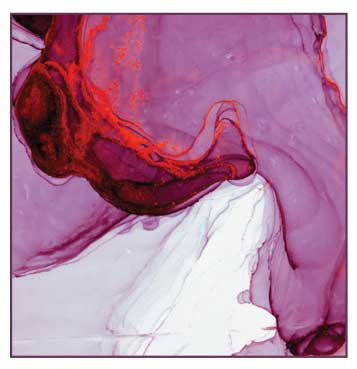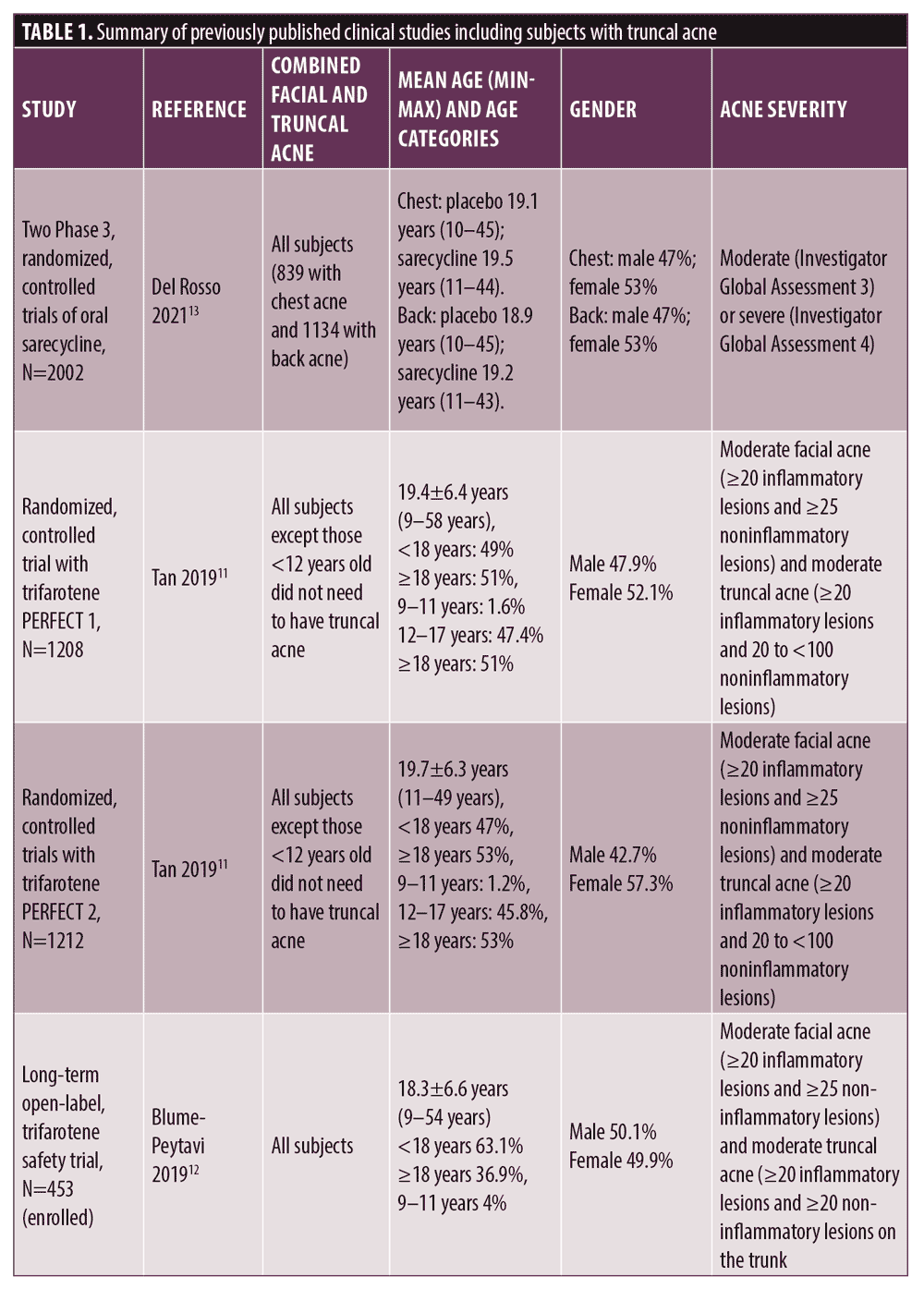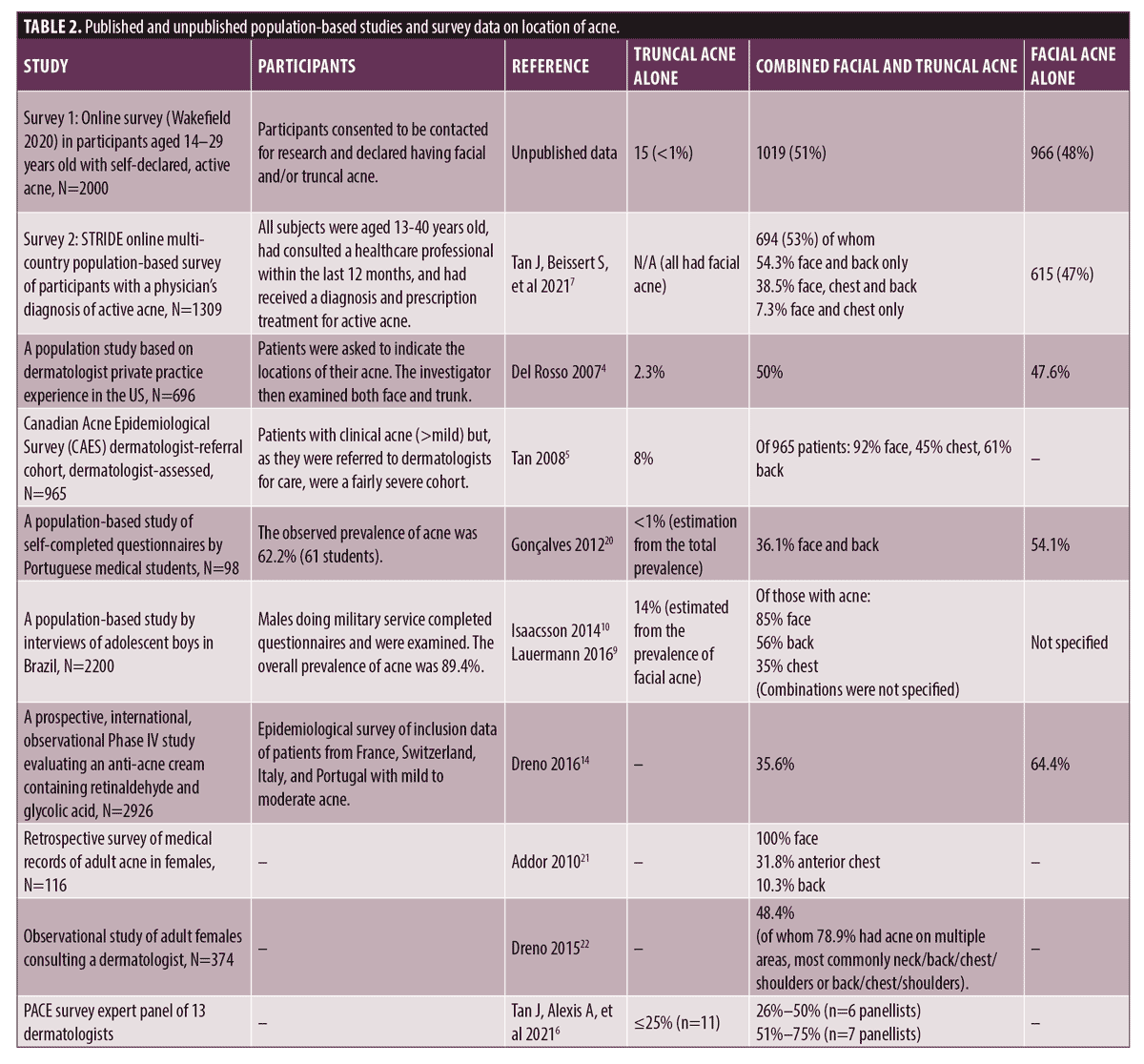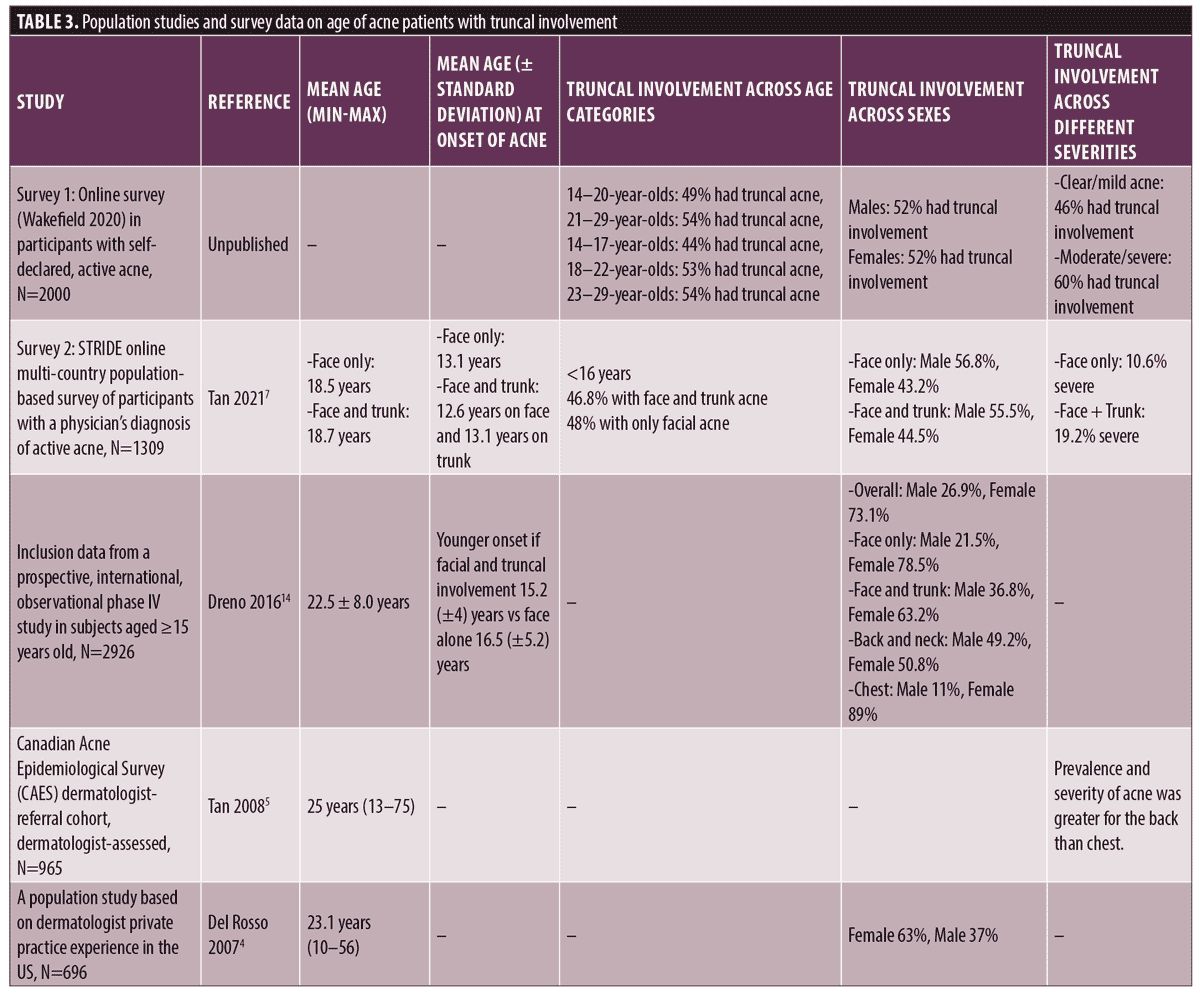 J Clin Aesthet Dermatol. 2022;15(10):62–67.
J Clin Aesthet Dermatol. 2022;15(10):62–67.
by Jerry Tan, MD; James Q Del Rosso, DO; Jonathan S Weiss, MD;
Alison M Layton, MBChB; Neal D Bhatia, MD; Krysten Lisella Arekapudi, DNP;
Firas G Hougeir, MD; Seemal R Desai, MD
Dr. Tan is with Windsor Clinical Research Inc. in Windsor, Ontario, Canada, and the Department of Medicine at the University of Western Ontario, London, Ontario, Canada. Dr. Del Rosso is with JDR Dermatology Research and Thomas Dermatology in Las Vegas, Nevada and Advanced Dermatology and Cosmetic Surgery in Maitland, Florida. Dr. Weiss is with Georgia Dermatology Partners and Gwinnett Clinical Research Center Inc. in Snellville, Georgia. Dr. Layton is with the Department of Dermatology at Harrogate and District NHS Foundation Trust in Harrogate, United Kingdom. Dr. Bhatia is with Therapeutics Clinical Research in San Diego, California. Dr. Lisella Arekapudi is with Galderma Laboratories L.P. in Fort Worth, Texas. Dr. Hougeir is with Southeast Dermatology Specialists in Douglasville, Georgia. Dr. Desai is with the Department of Dermatology at The University of Texas Southwestern Medical Center in Dallas, Texas. Dr. Desai is also with Innovative Dermatology in Plano, Texas.
FUNDING: The surveys were conducted, designed and analyzed by Wakefield Research and Kantar Health and funded by Galderma Laboratories, L.P.
DISCLOSURES: Dr. Tan has served as an advisor, consultant, investigator and/or speaker for Galderma, Bausch, Boots Walgreens, Botanix, Cipher, Cutera, Leo Pharma, L’Oreal, Pfizer, Sun Pharma; Dr. Del Rosso has served as an investigator, consultant, advisor, and/or speaker for Galderma, Abbvie, Aclaris, Almirall, Amgen, Anaptys Bio, Arcutis, Athenex, Bausch, Biofrontera, Biopharmx, Biorasi, Blue Creek, Botanix, Brickell, Bristol Meyers Squibb, Cara Therapeutics, Cassiopea, Dermata, Dermavant, Encore, Epi Health, Evommune, Ferndale, Genentech, Incyte, JEM Health, Leo Pharma, La Roche Posay, Lilly, MC2, Novan, Pfizer, Ralexar, Regeneron, Sanofi-Genzyme, Sente, SolGel, Sonoma, Sun Pharma, Trevi, UCB, Verrica, and Vyne; Dr. Weiss has served as an investigator, consultant, advisor and/or speaker for Galderma, Almirall, Bausch Health/Ortho Dermatologics, Cassiopia, Cutera, EPI Health, Foamix/VYNE; Dr. Layton has served as advisor, consultant, and/or investigator for research (funded to institution) and/or received honoraria for unrestricted educational events from Almirall, Eucerin, Galderma, GSK, La Roche-Posay, LEO Pharma, L’Oréal, Mylan, Origimm, Proctor & Gamble; Dr. Bhatia has served as advisor, consultant, and/or investigator for Abbvie, Almirall, Arcutis, Arena, Biofrontera, BMS, BI, Brickell, Dermavant, EPI Health, Ferndale, Galderma, Genentech, InCyte, ISDIN, J&J, LaRoche-Posay, Leo, Lilly, Mayne, Novartis, Ortho, Pfizer, P&G, Regeneron, Sanofi, Stemline, SunPharma, Verrica, and Vyne; Dr. Arekapudi is an employee of Galderma Laboratories, L.P.; Dr. Hougeir has served as an investigator, consultant, advisor and/or speaker for Galderma, Abbvie, Aclaris, Almirall, Amgen, Arcutis, Dermavant, Intraderm, ISDIN, Janssen, LEO Pharma, Lilly, Menarini, Novartis, Orthodermatologics, Pfizer, Promius, Regeneron, Sanofi-Genzyme, UCB, and Verrica; and Dr. Desai has served as a consultant and/or investigator for a variety of different organizations including Galderma, Pfizer, Lilly and others.
ABSTRACT: Background. Truncal acne is frequently underdiagnosed despite affecting around half of those with facial acne. The objective was to provide an overview of the literature on the incidence of truncal acne according to age, gender, and acne severity.
Methods. A narrative review of data from recent large surveys and a literature search in PubMed on the incidence of truncal acne across subgroups of age, gender, and acne severity.
Results. The prevalence of truncal acne alone was low, ranging from <1% to 14%, but approximately 30 to 60 percent of individuals with facial acne also had truncal acne depending on the population. In an online survey in the United States of 2,000 respondents aged between 14 –29 years with self-reported active facial and/or truncal acne, the incidence of truncal acne was lower in the 14–20 years subgroup than in the 21–29 years subgroup (49% vs 54%). The incidence of truncal acne was similar in both males and females, while 46 percent of respondents with self-declared clear and mild acne indicated having truncal involvement compared to 60 percent of those with moderate or severe acne.
Limitations. Online surveys have inherent limitations, such as self-reporting and potential confounders.
Conclusion. Data suggests that patients with both facial and truncal involvement have earlier onset of acne and more severe acne. Additional adverse psychological impact may arise from having the impression that the disease is spreading and becoming more severe. Raising awareness of truncal acne prevalence and demographics could improve its clinical management to reduce the negative psychological impact.
Keywords: Acne, back, chest, trunk, truncal, prevalence, demographics, burden
Acne most commonly affects patients during adolescence in parallel with increased androgen production.1 Some patients develop clinical features as early as nine years of age and, in some cases, there is a gradual remission of symptoms at the end of the growth period. Alternatively, acne may persist in adulthood (persistent acne) or even start at an advanced age (late-onset acne).2
Acne predominantly occurs on the face, chest and/or back, as these areas have the highest densities of pilosebaceous follicles. Truncal acne (inclusive of the anterior chest, upper back, shoulders) is frequently underdiagnosed despite affecting around half of individuals that have facial acne.3,4 In consultations, patients may focus primarily on facial acne, since it is readily visible to others, highlighting the importance of performing a physical exam of the face, chest and back to evaluate severity and extent of disease. In a referral cohort of 965 patients with acne, patient reporting was consistent with clinical evaluation in 92 percent of cases for facial acne but only around 70 percent for truncal acne.5 In a community-based US study, 22 percent of the patients with facial acne as the primary reason for consultation did not spontaneously mention truncal involvement during the initial consultation but it was detected during the physical examination.4 However, 78 percent of the patients wanted treatment for their truncal acne lesions, even those who had not voluntarily mentioned the presence of truncal acne.4
A dermatology panel of acne experts (Personalising Acne Consensus of Experts [PACE]) identified gaps and recommendations for clinical management of truncal acne and highlighted the importance of addressing not just facial acne but also truncal acne during patient consultations.6 The recommendations should help facilitate the care of patients who present with truncal acne, with or without facial acne.
While several studies have identified the prevalence of truncal involvement, there is a paucity of publications on the incidence in different demographic subgroups. Prevalence data of truncal acne across demographics requires large data sets, which can be obtained by large online surveys. The objective of this manuscript was to provide an overview of the literature, as well as recent survey data, on the incidence of truncal acne according to age, gender, and acne severity.
Methods
Survey 1 (Wakefield). A quantitative email survey was administered in the United States between December 4 and December 15, 2020 (conducted by Wakefield Research). Respondents (N=2000) were aged between 14 to 29 years old and had self-declared, active, facial and/or truncal acne. Participants were randomly selected from a proprietary database of emails of respondents who had consented to be contacted for research by email invitation. As they were not at risk and had no physical contact with the researchers, no personally identifiable information was collected, and no study-specific consent was required.
Survey 2 (STRIDE survey). A cross-sectional, online, population-based survey (conducted by Kantar Health) from six countries (USA, Canada, Brazil, Germany, France and Italy) included respondents aged 13 to 40 years old who had consulted a healthcare professional within the last 12 months, had received a diagnosis and prescription treatment for active acne, and who self-graded the severity of their acne at different anatomical locations.7 All respondents had facial acne with or without truncal acne. The qualitative STRIDE survey included 30 participants with moderate to severe facial and truncal acne lesions who underwent 60-minute in-depth telephone interviews. The quantitative STRIDE survey recruited two groups, one with acne on the face (and/or neck) only and one with acne on the face and chest and/or back. This was a web-based survey of an online respondent panel who had previously agreed to respond to health surveys about their medical condition or that of their child (all participants aged 13 to <18 years old were assented and permitted by their legal guardian).
Overview of prevalence of truncal acne.
In published clinical studies, albeit with the limitation of selection bias, around half the subjects were 18 years old or less and around half were greater than 18 years old. The mean age ranged from 18.3 to 19.7 years old and all subjects in the studies were aged between 9 and 58 (Table 1).

Clinical studies including subjects with truncal acne are summarized in Table 1 and population-based studies and surveys are summarized in Table 2. A 2019 review of literature mentioning truncal acne found 76 articles, mostly published within the past two decades, including six that reported prevalence [8].
According to the observational and population-based studies listed in Table 2, the prevalence of truncal acne alone was low, ranging from <1% to 14%, with the highest percentage in adolescent boys in Brazil.9,10 In the listed studies, around 50 percent of patients with facial acne also had truncal acne (approximately 30% to 60% depending on the population) (Table 2).

Surveys listed in Table 2 also showed that active facial acne with truncal involvement is common. In Survey 1 (Wakefield) and Survey 2 (STRIDE quantitative survey), 51 percent and 53 percent, respectively, had acne on the face and trunk.7 Finally, around half of the Personalizing Acne Consensus of Experts (PACE) panel of 13 dermatologists indicated that 26% to 50% of their patients had facial and truncal acne, while the other half indicated the proportion was 51% to 75% with facial and truncal acne.6
Demographics of truncal acne. There is limited data on the demographics of truncal acne from prior randomized controlled trials that had restrictive study populations and mainly focused on facial acne (Table 1). Additionally, open observational studies and survey data provide large amounts of epidemiologic data on truncal acne across demographics, which may more closely resemble real-life populations (Table 2).
Data from clinical studies. The populations of clinical studies reflect the inclusion criteria, rather than the general population. Generally, half the subjects in the clinical studies were aged below 18 years old and half above 18 years old. The mean ranged from 18.3 to 19.7 years old and all subjects in the studies were aged between 9 and 58 years (Table 1).
Randomized vehicle-controlled clinical trials to evaluate trifarotene 0.005% cream treatment included subjects of 9 years or greater with moderate (Investigator Global Assessment [IGA] 3) facial acne and moderate (Physicians Global Assessment [PGA] 3) truncal acne.11 Due to the lower prevalence of truncal involvement (compared with facial involvement) in subjects aged 9 to 11 years, the inclusion criterion regarding truncal acne was optional in this age group, which represented very few subjects (less than 2% of the overall intent-to-treat populations).11 Mean age was 19.4 years old (range 9–58 years) with similar proportions of males and females.11
A multicenter, open-label, non-comparative, long-term trifarotene safety study enrolled 453 patients with moderate acne on the face and trunk of mean age 18.3 ± 6.6 years (ranging from 9 to 54 years) with equal proportions of males and females.12
Finally, inclusion criteria of two Phase 3, randomized, controlled trials of oral sarecycline were patients aged nine years of age and older with moderate (IGA 3) or severe (IGA 4) facial acne and at least mild (IGA score of ≥2) chest or back acne at baseline.13 For the different groups, mean age was between 18.9 and 19.5 (range 10-45 years) and proportion of males was between 43.5 and 50.8 percent.13
Data from population-based studies and surveys. Data on the age of truncal acne incidence, from population-based studies and surveys, is summarized in Table 3. Large data sets of surveys can also differentiate truncal vs facial based on age, as well as sex, and severity of acne.

Survey 1. The Wakefield survey was limited to respondents aged between 14–29 years with self-reported facial and/or truncal acne in the United States. In the 14–17 years subgroup, the 18–22 years subgroup, and the 23–29 years subgroup, 44 percent, 53 percent and 54 percent, respectively had truncal acne, suggesting that truncal acne appears later than facial acne. When comparing the percentage of male and female respondents who had truncal acne, the incidence was the same (52%) for both sexes. Of the respondents with clear and mild acne, 46 percent had truncal involvement, whereas 60 percent had truncal involvement in those with moderate or severe acne, suggesting that truncal involvement may be somewhat more common in people with more severe forms of acne, but is often present regardless of acne severity.
Survey 2. In the quantitative STRIDE survey, there were no significant differences in terms of age or sex between the facial acne only and combined facial and truncal acne groups.7 Respondents reported acne involvement on the face (100%), chest (45.6%), and back (92.8%), while 54.3 percent of facial and truncal respondents had acne on the face and back only, 7.3 percent had acne on the face and chest only, and 38.5 percent had acne on all three sites (i.e., face, chest, and back). In patients with both facial and truncal acne, the mean age at onset of facial acne was 12.6 years compared to 13.1 years for truncal acne; in the patients with only facial acne, the mean age was 13.1 years. Females aged 18–40 years old represented 19 percent of all subjects with only facial acne, but 21 percent of all subjects in the facial and truncal acne group. More females were in the older age group (36.8% vs 50.9%, respectively, p=0.020), and the duration of facial and truncal acne was significantly longer in the older age group (16.8 years [p=0.001] and 16.5 years [p=0.001] for facial and truncal acne, respectively). A higher proportion of respondents with self-reported severe or very severe facial acne had both face and trunk acne compared to respondents with only facial acne (19.2% vs 10.6%; p=0.024). The severity of acne on the back (32% mild, 45% moderate, 18% severe, 4% very severe) was more severe than acne on the chest (15% almost clear, 39% mild, 29% moderate, 15% severe), and the worst ever severity in the past 12 months was severe grade for 32 percent and 17 percent of back and chest, respectively.
Other published population-based and survey data. Baseline data from a large, prospective, international, observational Phase IV study, showed that patients with facial and truncal involvement had an earlier onset of acne at 15.2 (±4) years vs 16.5 (±5.2) years for patients with only facial acne.14 Acne on the back was more common in males than females (27% were males in total study population versus 49% were male in those with back and neck acne), whereas chest acne was observed in a larger proportion of females (73% were females in total study population vs 89% were female in those with chest acne).14
Summary points of demographics of truncal acne.
- Generally, truncal acne occurs in adolescents, but may start or persist well into adulthood.
- Onset of acne was earlier for patients that went on to have truncal involvement.
- Truncal acne often appears later than facial acne.
- Truncal acne appears to be equally prevalent in males and females.
- Truncal acne involvement may be associated with more severe acne, but is often present regardless of acne severity.
Psychological impact of truncal acne. Although the psychological impact of acne will vary between patients, truncal acne may result in scars and thus negatively impact self-esteem and body image causing embarrassment in social situations where the skin is revealed.
In the Wakefield survey, among the participants with self-declared mild or moderate active acne, those with both facial and truncal acne were more likely to adjust their appearance on screen before a video conference than those with only facial acne (90% vs 84%; significant difference at the 95% confidence level by independent Z-test). More respondents indicated they would choose outfits to cover up their truncal acne before a meeting if they had moderate to severe truncal acne than those with almost clear/mild acne (84% vs 80% for total population; significant difference at the 95% confidence level); if they were in the older age group of 23 to 29 years than in the younger age groups (82% vs 80% for total population; significant difference at the 95% confidence level), if they were female compared to male (82% vs 77%; difference not significant). Less female than male respondents indicated they were more comfortable with others seeing acne on their trunk (chest, back and shoulders) than on their face (31% female vs 42% male).
In the STRIDE survey, patients with combined facial and truncal acne were 1.5 times more likely to report a greater impact on quality of life (QoL) than those with facial acne alone (DLQI odds ratio (OR): 1.61, p=0.042; CDLQI: OR: 1.86, p=0.028).15 Furthermore, the emotional burden and impact on daily life may differ according to age and gender, as it has been suggested that females typically experience a greater negative impact than males overall, although both may be markedly affected.15 A sub-group of Survey 2 (STRIDE qualitative in-depth telephone survey; N=30), with active acne on both the face and trunk, reported truncal involvement on the back (21 patients [70%]), chest and torso (13 [43%]), shoulders (10 [33%]) or neck (in 6 patients [20%]). For a large majority, truncal acne appeared later, after the first signs of facial acne, and they indicated that truncal acne was more worrisome because it gave the impression that their acne was spreading.
Management of truncal acne.Understanding the adverse impact of truncal involvement and scars highlights the need for early treatment to prevent scars and improve QoL. Some acne treatments have specifically been evaluated for truncal acne.
Small, pilot, open-label studies were performed to evaluate benzoyl peroxide (5.3%) emollient foam for treating mild to moderate truncal acne;16 3mg drospirenone/0.02 mg ethinyl estradiol for moderate truncal acne in females aged 18 to 45 years old17; and azelaic acid (15%) foam for moderate truncal acne in patients aged 12 years or older.18
Retinoids are widely used in the management of acne.19 Topical trifarotene cream (0.005%) is a selective retinoic acid receptor (RAR)-γ agonist that has been evaluated in both facial and truncal acne and showed significant improvements when evaluated in subjects with moderate facial and truncal acne in two pivotal, Phase 3, 12-week efficacy studies11 and one long-term 52-week safety study.12
Finally, oral sarecycline antibiotic has been evaluated for the management of truncal acne in two Phase 3 randomized controlled trials designed to primarily evaluate efficacy and safety for facial acne; efficacy for truncal acne in these studies was based solely on investigator global assessments.13
Conclusion
Although not always visible and not often mentioned at consultations, around 50 percent of patients with facial acne also have truncal acne, which often appears later over the time course of their acne. Truncal acne is equally common in males and females and most commonly occurs during adolescence, but may start or persist well into adulthood. Generally, onset of acne is earlier and the acne is more severe for patients that have both facial and truncal involvement. Patients with both facial and truncal acne may experience a cumulative adverse effect on QoL due to having the impression that the disease is spreading and becoming more severe. Raising awareness of truncal acne prevalence and demographics could improve its clinical management due to earlier recognition (as many patients do not voluntarily mention it) and earlier initiation of treatment, both of which are more likely to reduce the impact on the QoL of acne patients.
Acknowledgments
Editorial assistance was provided by Helen Simpson, PhD, of My Word Medical Writing and funded by Galderma Laboratories, L.P.
References
- Degitz K, Ochsendorf F. Acne. J Dtsch Dermatol Ges. 2017;15(7):709–722.
- Shen Y, Wang T, Zhou C, et al. Prevalence of acne vulgaris in Chinese adolescents and adults: a community-based study of 17,345 subjects in six cities. Acta Derm Venereol. 2012;92(1):40–44.
- Del Rosso JQ, Stein-Gold L, Lynde C, et al. Truncal Acne: A Neglected Entity. J Drugs Dermatol. 2019;18(12):205–1208.
- Del Rosso JQ, Bikowski JB, Baum E, et al. A closer look at truncal acne vulgaris: prevalence, severity, and clinical significance. J Drugs Dermatol. 2007;6(6):597–600.
- Tan JK, Tang J, Fung K, et al. Prevalence and severity of facial and truncal acne in a referral cohort. J Drugs Dermatol. 2008;7(6):551–556.
- Tan J, Alexis A, Baldwin H, et al. Gaps and recommendations for clinical management of truncal acne from the Personalising Acne: Consensus of Experts panel. JAAD International. 2021;5:33–40.
- Tan J, Beissert S, Cook-Bolden F, et al. Impact of facial and truncal acne on quality of life: A multi-country population-based survey. JAAD Int. 2021;3:102–110.
- Poli F, Auffret N, Leccia MT, et al. Truncal acne, what do we know? J Eur Acad Dermatol Venereol. 2020;34(10):2241–2246.
- Lauermann FT, Almeida HL, Jr., Duquia RP, et al. Acne scars in 18-year-old male adolescents: a population-based study of prevalence and associated factors. An Bras Dermatol. 2016;91(3):291–295.
- Isaacsson VC, Almeida HL, Jr., Duquia RP, et al. Dissatisfaction and acne vulgaris in male adolescents and associated factors. An Bras Dermatol. 2014;89(4):576–579.
- Tan J, Thiboutot D, Popp G, et al. Randomized Phase 3 evaluation of trifarotene 50 μg/g cream treatment of moderate facial and truncal acne. J Am Acad Dermatol. 2019;80(6):1691–1699.
- Blume-Peytavi U, Fowler J, Kemény L, et al. Long-term safety and efficacy of trifarotene 50 μg/g cream, a first-in-class RAR-γ selective topical retinoid, in patients with moderate facial and truncal acne. J Eur Acad Dermatol Venereol. 2020;34(1):166–173.
- Del Rosso JQ, Stein Gold L, Baldwin H, et al. Management of Truncal Acne With Oral Sarecycline: Pooled Results from Two Phase-3 Clinical Trials. J Drugs Dermatol. 2021;20(6):634–640.
- Dréno B, Jean-Decoster C, Georgescu V. Profile of patients with mild-to-moderate acne in Europe: a survey. Eur J Dermatol. 2016;26(2):177–184.
- Dréno B, Tan J. Beyond the Face: The Hidden Burden of Truncal Acne. Acta Derm Venereol. 2021;101(7):adv00495.
- Bikowski J. A review of the safety and efficacy of benzoyl peroxide (5.3%) emollient foam in the management of truncal acne vulgaris. J Clin Aesthet Dermatol. 2010;3(11):26–29.
- Palli MB, Reyes-Habito CM, Lima XT, et al. A single-center, randomized double-blind, parallel-group study to examine the safety and efficacy of 3mg drospirenone/0.02 mg ethinyl estradiol compared with placebo in the treatment of moderate truncal acne vulgaris. J Drugs Dermatol. 2013;12(6):633–637.
- Hoffman LK, Del Rosso JQ, Kircik LH. The Efficacy and Safety of Azelaic Acid 15% Foam in the Treatment of Truncal Acne Vulgaris. J Drugs Dermatol. 2017;16(6):534–538.
- Baldwin H, Webster G, Stein Gold L, et al. 50 Years of Topical Retinoids for Acne: Evolution of Treatment. Am J Clin Dermatol. 2021;22(3):315–327.
- Gonçalves G, Amado JM, Matos ME, et al. The prevalence of acne among a group of Portuguese medical students. J Eur Acad Dermatol Venereol. 2012;26(4):514–517.
- Addor FA, Schalka S. Acne in adult women: epidemiological, diagnostic and therapeutic aspects. An Bras Dermatol. 2010;85(6):789–795.
- Dréno B, Thiboutot D, Layton AM, et al. Large-scale international study enhances understanding of an emerging acne population: adult females. J Eur Acad Dermatol Venereol. 2015;29(6):1096–1106.

